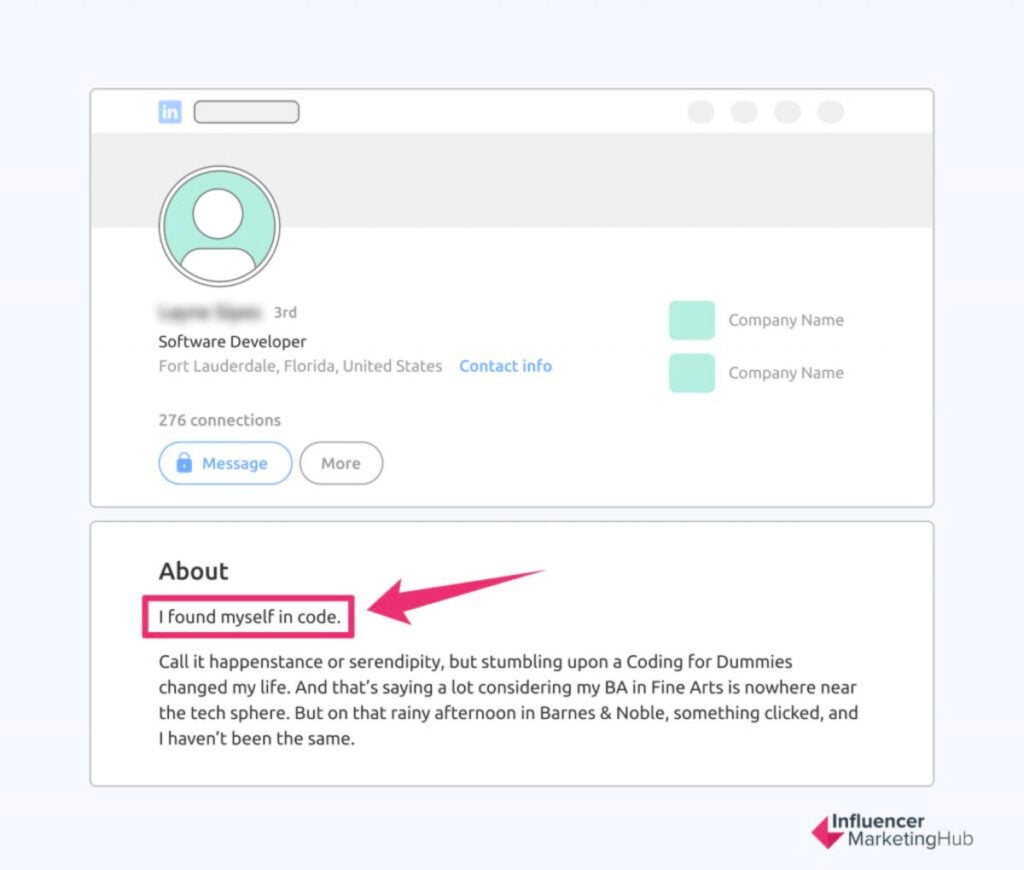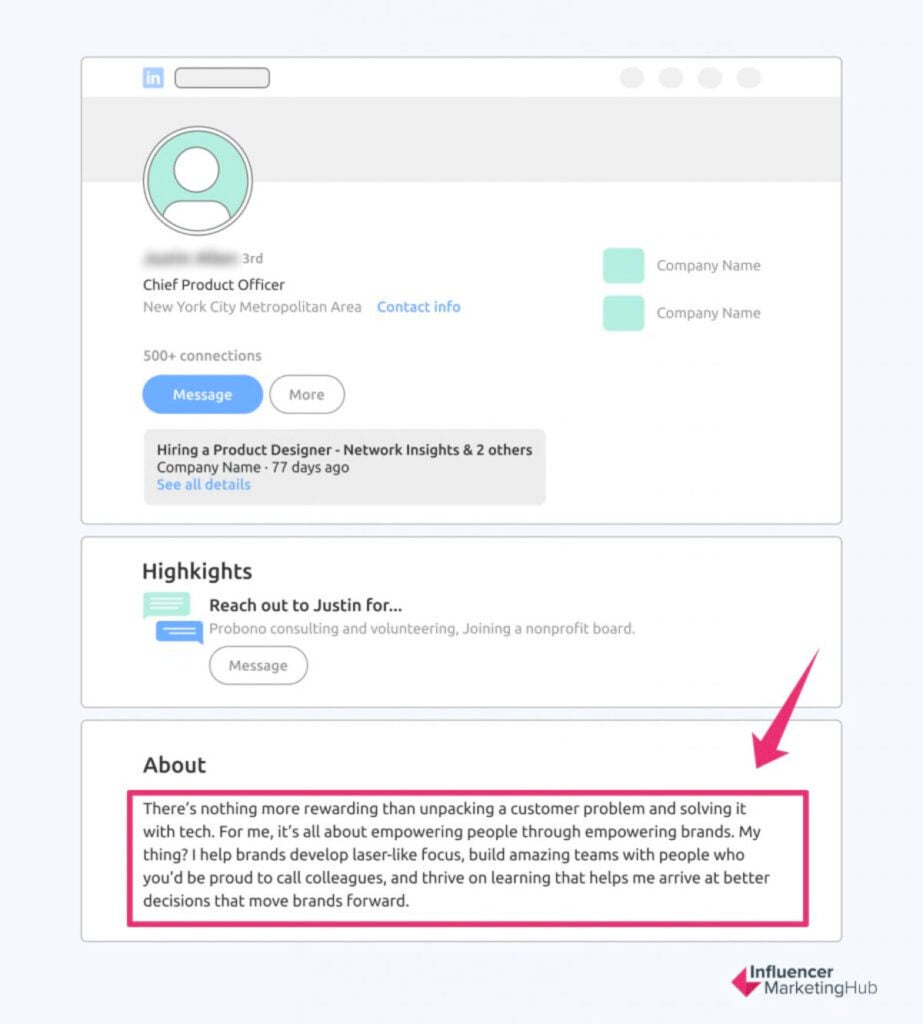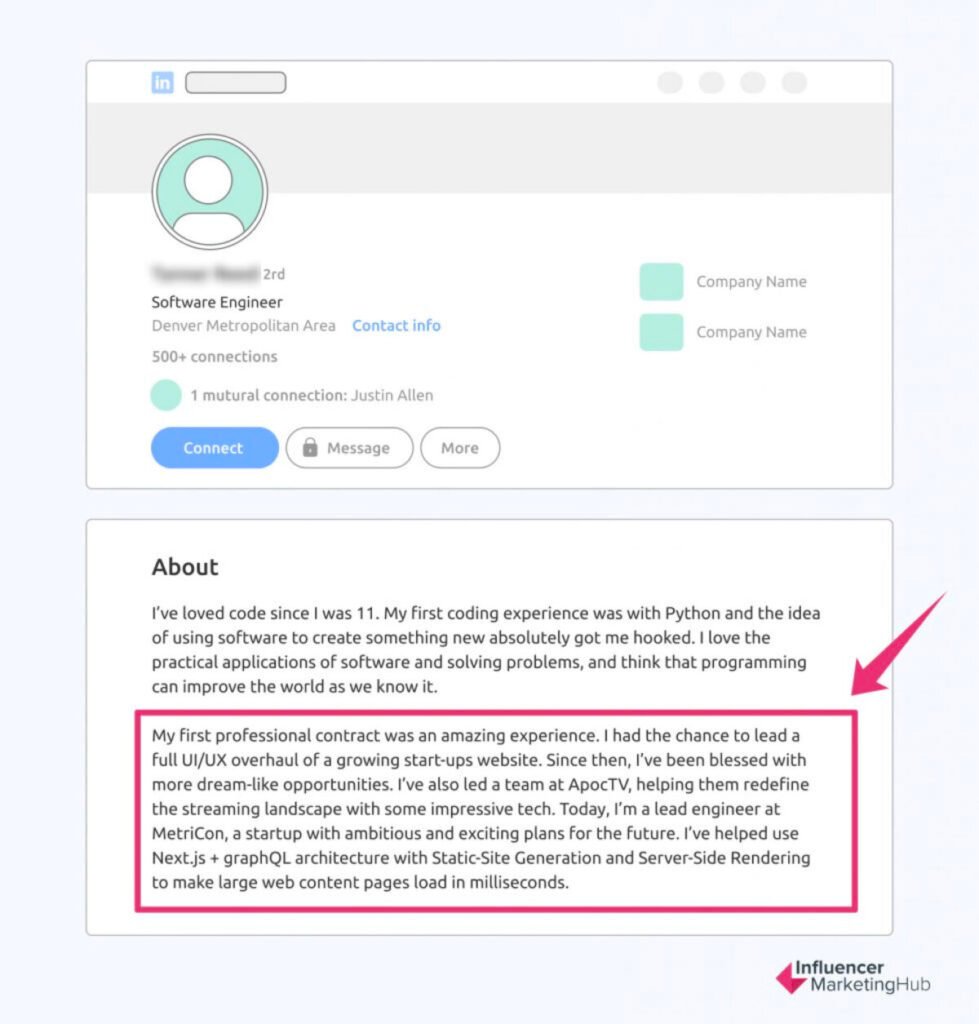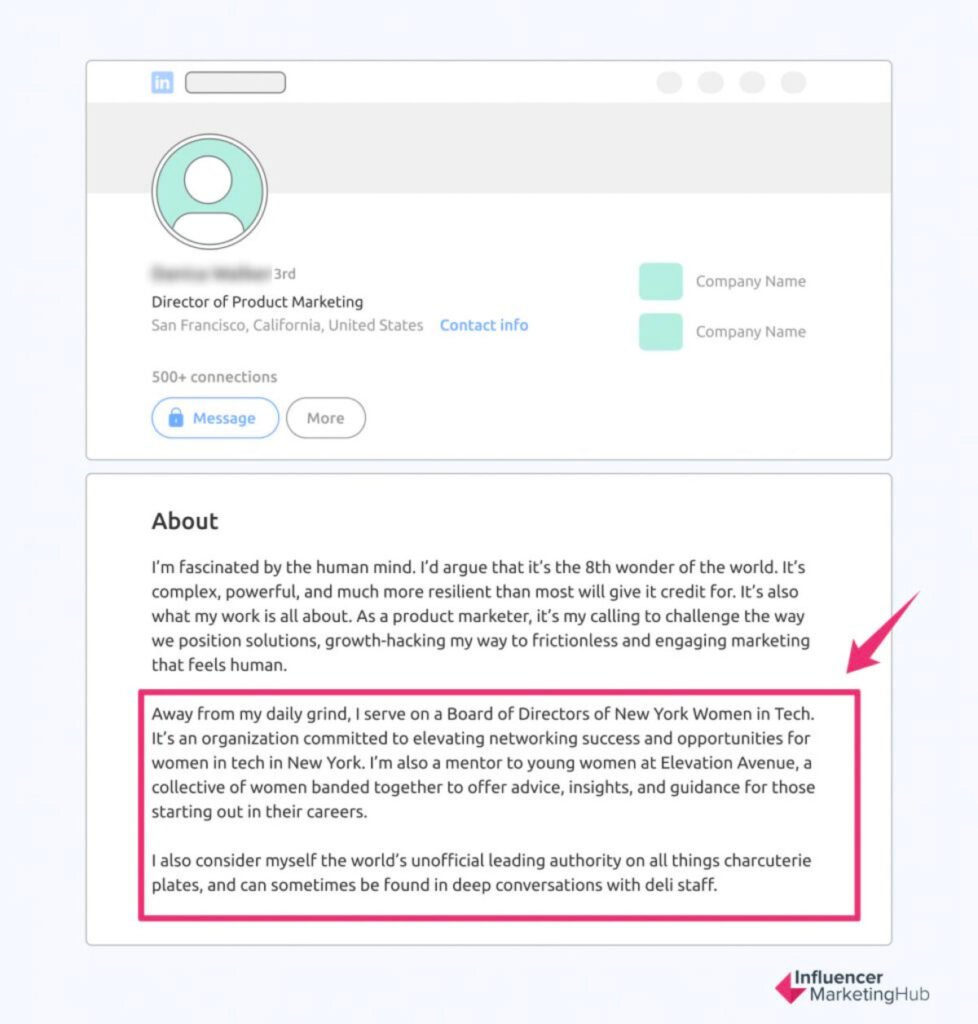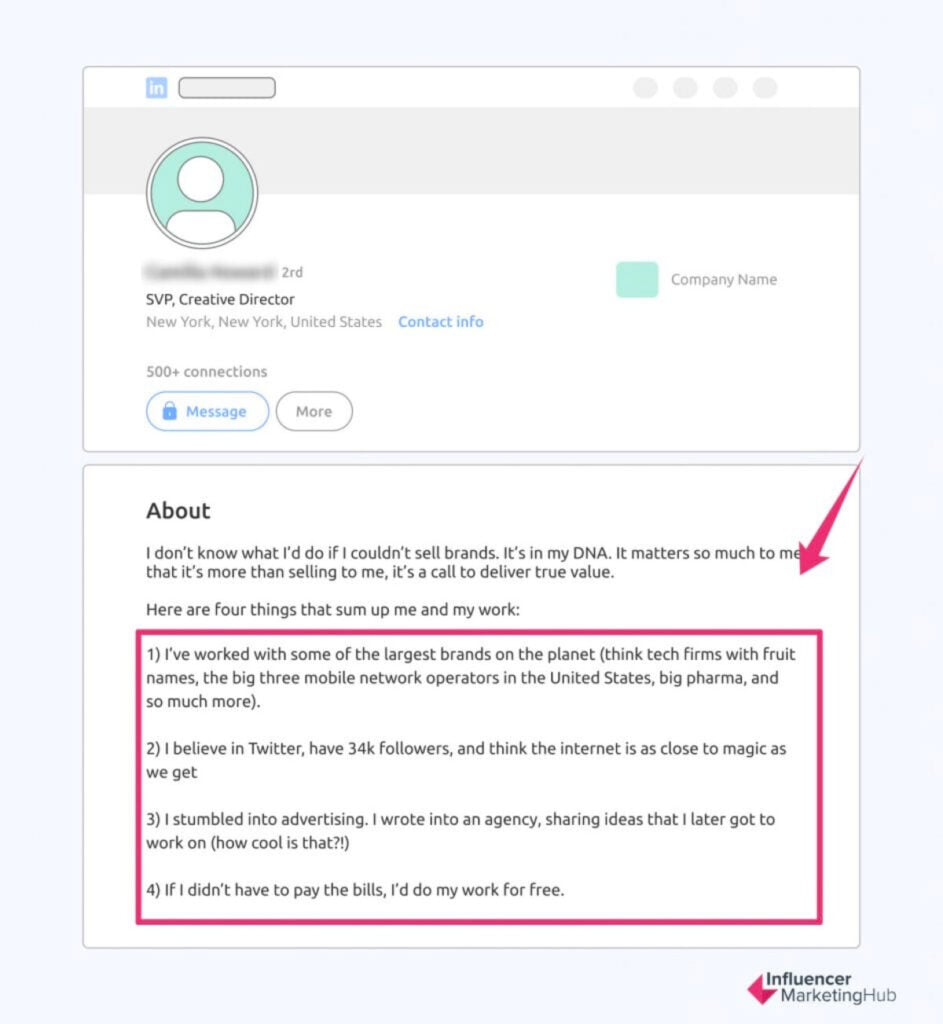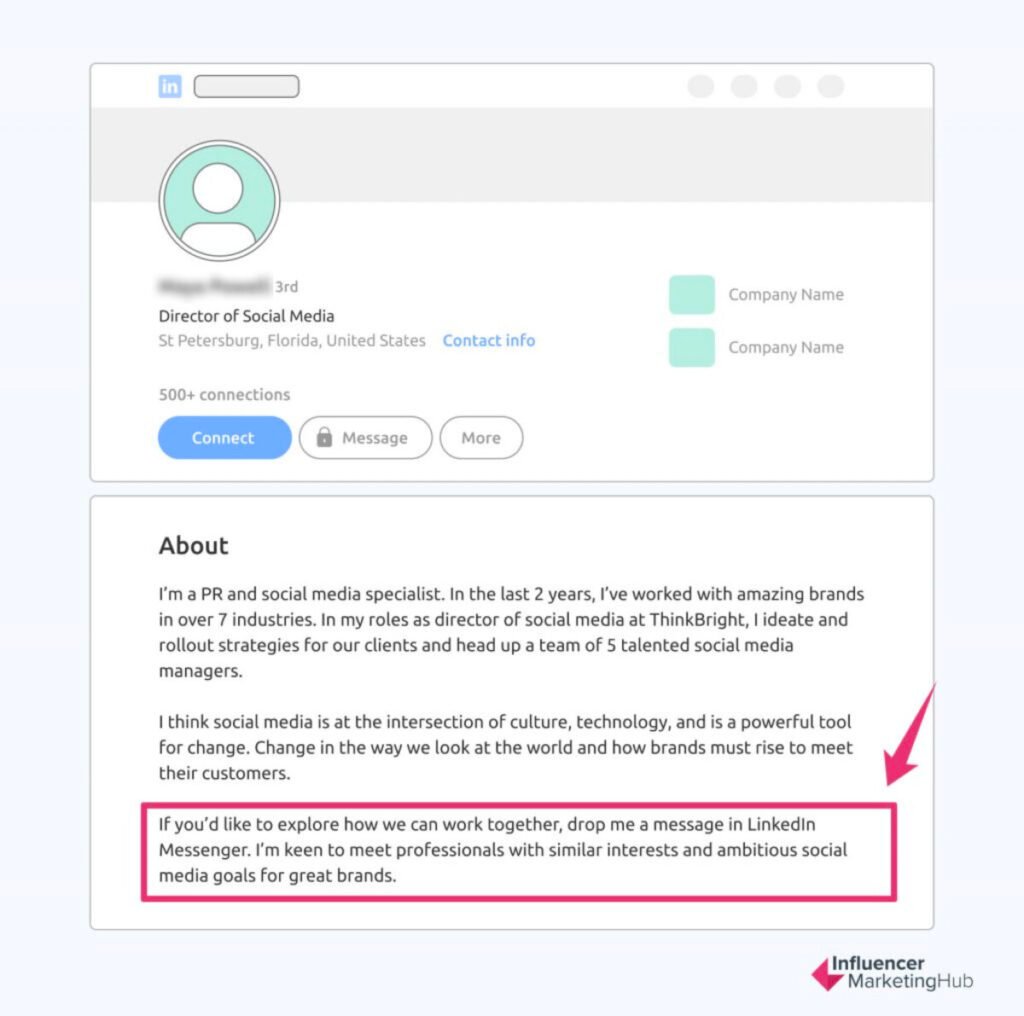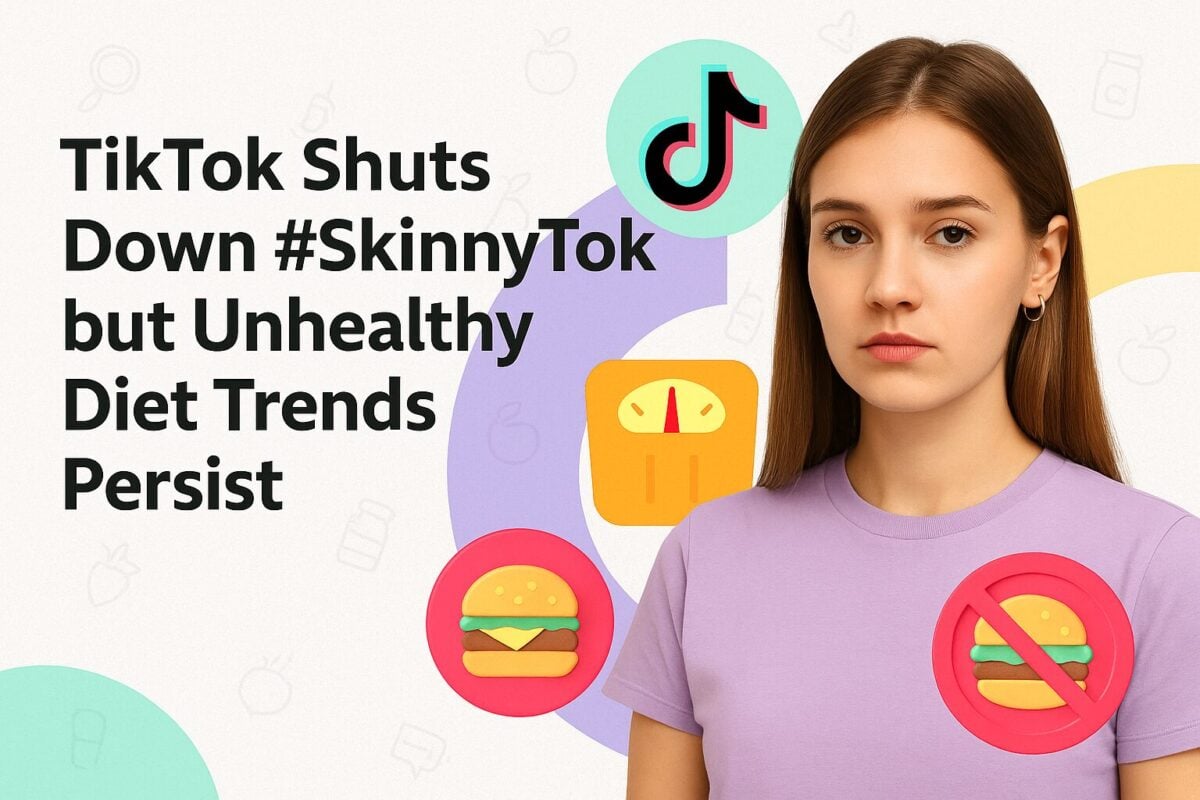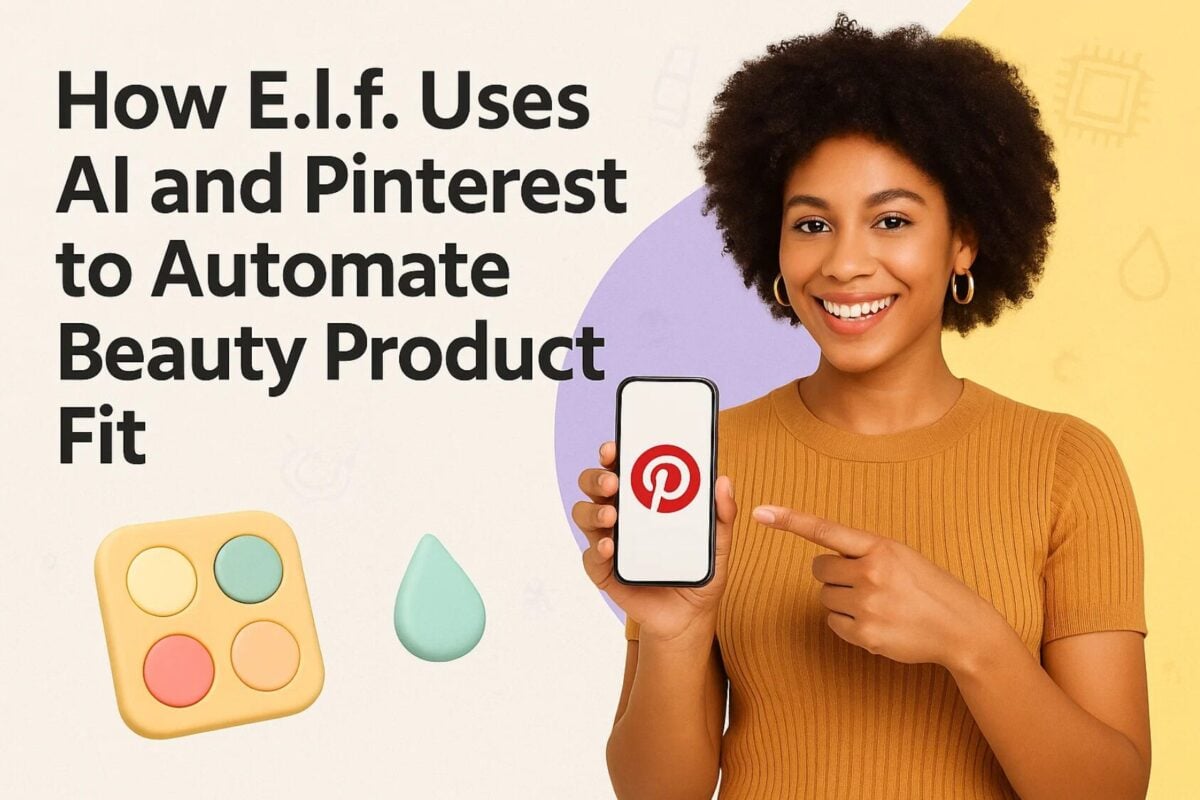Writing a LinkedIn summary for the first time or looking to improve yours? This article includes all you’ll need to craft something impactful. You’ll find a complete, step-by-step structure with key pointers to help you nail your unique value proposition and make the right impression on your network, recruiters, and prospective employers.
LinkedIn Summary Examples:
- What is a LinkedIn Summary?
- 3 Reasons Why Your LinkedIn Summary Matters
- How to Structure Your LinkedIn Summary
- Create a Strong Hook
- Share What Matters to You and Why
- Connect the Dots
- Share Professional and Personal Accomplishments
- Call Out Expertise and Experience
- Extend an Invitation
- LinkedIn Summary Top Tips
- Frequently Asked Questions
What is a LinkedIn Summary?
A LinkedIn summary is the equivalent of an about section on a brand’s website, but it’s about you. It's a 2000 character box available to every LinkedIn account holder.
3 Reasons Why Your LinkedIn Summary Matters
LinkedIn Summaries are a big deal. They offer prospective employers and recruiters a look at who you are and why you should be considered for a career opportunity. But it’s a little more specific than that. Here are 3 reasons why you need a strong and well-written summary:
1. The World is Shrinking & First Impressions are Crucial
We’ve all heard the adage that first impressions matter. On LinkedIn, they really do go a long way. Today, the web has made it easy to access talent on a global scale. And if you're looking for the opportunity to showcase your skills and experience, there is no better place to share that than on LinkedIn. Your summary helps by supporting your work history with a clearer, more personable approach.
3. Showcase Expertise and Experience
Looking at a list of roles you’ve held is, well, “meh”. But a summary accompanying a record of roles you’ve served is far more impressive. A summary acts as a more personalized account of your career. It provides context and breathes life into what can easily be seen as a bland list of facts. This may not seem like a deal-breaker, but it can be. Recruiters and employers want to find the right fit and nothing less. Seeing what you’ve accomplished and what drives you helps recruiters fill checkboxes. It also becomes easier to want to get to know more about you.
3. To Be Found
SEO Matters. To be found online you have to position your profile using terms people looking for professionals like you use. These appear in your title that shows what your role is. While your summary isn't what shows up in search, it's what sells you as an asset and, therefore, matters.
How to Structure Your LinkedIn Summary
How do you create a winning LinkedIn summary? Here’s a structure we’ve found to be highly effective. It includes 6 parts (with real LinkedIn summary examples) that band together to deliver a well-rounded, interesting, personable, and impactful summary.
Create a Strong Hook
A hook is exactly what it sounds like. It creates a mental connection that pulls a reader in, beckoning more attention. Hooks on profiles can be in various ways, but the goal is always to draw your reader in and make them want to read what comes next.
This example shows how powerful a single-line hook can be. Reading “I caught fire coding” immediately pulls you in, making you want to learn more about how coding defines who the person is.
Share What Matters to You and Why
This may seem a little conceited but it's an essential part of promoting your personal brand. For people to appreciate what makes you unique and the right person for the job, they must understand what matters to you and why.
This member does an amazing job of articulating what matters to them and why. And if you look closely, they clearly show an important quality many employers look for; a genuine desire to help customers realize value. And they don't stop there. They continue to show how they approach their work. By sharing that they focus on key outcomes, building amazing teams, and quickly adapting to new information, this member also shows that they thrive on order, are a strong team player, and are flexible enough to do what is right for their employer when presented with new information.
Connect the Dots
Context is a powerful thing. It makes connecting ideas easier. And for prospective employers and recruiters, it can mean the difference between you being the person that "gets the job and wants it" and everyone else. Connect the dots by showing what you do to add value.
This example shows how the member digs into details that show how experienced they have become since their first professional contract. And this is a smart and powerful way to communicate expertise and experience to employers. The member also highlights details of their work and how it makes a real difference to their current employer.
Share Professional and Personal Accomplishments
Creating a complete picture of who you are requires sharing what you've accomplished. Sharing professional and personal wins is a must. It humanizes you and shows people that you are goal-oriented. As for the order, start with professional and end with personal. LinkedIn is a professional networking platform, and your goal is to position your brand for professional opportunities first.
This is a great example of how easy it is to draw attention to accomplishments. The member is modest about their role outside of work, but when you read about what they have been able to achieve, you quickly begin to appreciate that they really are passionate about their career in tech.
The member also shares a little of their personality in the last line of her LinkedIn summary. If you can, we recommend sharing a little of yours, too. It’s a great way to show a more personable dimension on your profile.
Call Out Expertise and Experience
This is a given but worth highlighting. Your expertise and experience carry weight. It's an indication of how prepared you are for your next professional role. As you share both, be clear and concise, and offer detail.
For example, an executive personal assistant may claim to have 5 years of experience. At face value, this may seem adequate. But simply claiming experience isn't enough to make you stand out from the crowd. Sharing that you have project management experience and have overseen 15 large projects is specific and more impressive.
This members experience is hard to dismiss. They have chosen to list key moments of their career in bullet form, making it easy for people to follow. Whats more, they have also injected a personal story that shows how invested they are in their work and why they do what she do. This members summary shows that it’s absolutely essential to list your experience and expertise (more on how to use this hack down below).
Extend an Invitation
As a social networking platform, LinkedIn is all about engaging and meeting new people. To give your profile and personal brand the best chance at getting the attention it needs, invite people to connect. It may seem unnecessary or possibly overkill, but it positions you as someone who wants to be of service and offer value, both of which are traits people admire.
This is a great example of how a member makes it easy for people to engage with them. Sure, you may not want to be solicited by anyone and everyone selling something, but that’s just a part of being online today and something you can easily manage.
People who want to work with this member know exactly how to reach them, and they expect to be well received. We recommend that when you extend your invitation, be sure to state what you expect. This example of an invite welcomes people who would like to work with you and get to know more about what you do.
See how that could deter everyone else?
LinkedIn Summary Top Tips
Writing your summary may feel a little alien and that’s okay. Many people find it hard to share details about themselves, and even top copywriters struggle to capture their essence in words. These writing tips will help you overcome writer’s block, making it easier to get your summary done in record time.
1. Disassociate
Writing about yourself may cause all sorts of discomfort. You may even experience a slight bout of imposter syndrome. But don’t let the discomfort win. Start by treating your summary as if it were one you’re writing about a close friend. This mental hack will help you distance yourself from all the ideas working against you. And if that still doesn’t work, ask a close friend to share what makes you great at what you do.
2. Use Lists
Lists are powerful tools and you should create one for each of the 6 steps. Include key points you must communicate for each step. This may sound like unnecessary admin, but we've found it invaluable. Listing what you must share keeps you from straying off-topic and ensures that you don’t miss out on an opportunity to mention something that could be important.
3. Think of Accomplishments and Value
Great copywriters understand the value of features, advantages, and benefits. They also know how to connect them to show how products deliver results. Here’s what each is and how you can incorporate them in your summary:
-
Features Are Expertise and Experience
Features are best described as aspects of a product or service. When applied to your experience and expertise, position both as aspects of the product (you).
For example, you could say “I obtained my PRINCE2® 6th Edition Practitioner certification.”
-
Advantages Are What Your Expertise and Experience Enable You to Deliver
Advantages identify what a feature enables a product to deliver to a customer. For your LinkedIn summary, you could say “as a project manager, my firm grasp of the Prince2 process model is applicable in any project scenario, and I can quickly apply the framework to structure initiatives.”
-
Benefits Are What Your Expertise and Experience Help Your Employer Achieve
Benefits are favorable outcomes features produce. Continuing with our Prince2 example, you could say “With my Prince2 knowledge, I have been to structure projects, align resources, and effectively manage scope creep for over 20 large IT networking projects. Being a project manager with 5 years of on-the-job experience has helped me deliver over $20M in bottomline profit for my employer.
-
Use White Space
White space is a term for open areas in online design. By leaving open spaces when writing your summary, readers will find it easier to follow your writing. Here is a great example of how to space summary text for easy consumption.
-
Take Your Time & Be Patient With Yourself
This may seem new and a little tough at first, and that’s okay. You aren’t expected to nail your LinkedIn profile the first time around, but these tips will help you shave time off the process and help you produce your best summary.
Write Yours
You now have a solid structure for creating your winning LinkedIn summary. These steps may not seem easy to follow right off the bat, but with a little time and practice, you’ll find it easy to write about yourself and your accomplishments. And who knows, you may just be approached about a new opportunity.
Frequently Asked Questions
Should I use a LinkedIn summary generator?
LinkedIn summary generators use templated profile summaries that anyone online can access. Needless to say, as much as they may seem appealing and could save you time, what could have been a strong profile and summary could fade into obscurity with many also using LinkedIn summary generators.
Are there LinkedIn summary examples for a career change?
Yes. This article includes a great example of a professional who changed careers. See the first step of how to structure your LinkedIn summary titled “Create a Strong Hook”. Katrina O’s summary shares how she went from a BA major to falling in love with code.
Are there LinkedIn summary examples for students?
See the sections titled “Connect the Dots”. James shares details on his first professional contract and how his career developed from there. Also, see the 6-part structure. It can be applied when creating student LinkedIn summaries.
Are there LinkedIn summary examples for jobseekers?
All summary examples listed in this article are perfect for job seekers to emulate and we strongly recommend following the structure for writing your LinkedIn summary. It’s designed to position your personal brand as favorably as possible.
